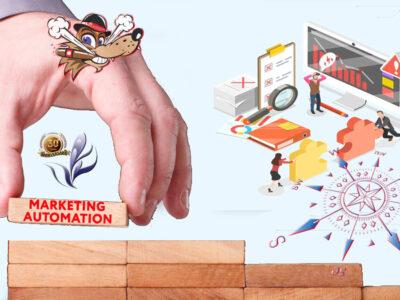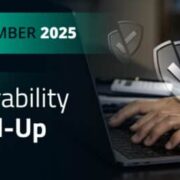Post Views: 1,326
Competition is a natural part of doing business.
While it can often seem intimidating, it’s actually a vital component of doing business, that forces you to innovate and stay on top of current trends and tactics. In short, it can be a struggle to take on competitors but it makes your business the best it can be for your customers. Be able to effectively communicate the differences between your competition and you to make it easier for customers and prospects to make decisions.
In “The Art of War,” Sun Tzu says “If you know the enemy and know yourself, you need not fear the result of a hundred battles.” With that in mind, can you concisely and effectively describe to a prospective customer how you are different from other building materials distributors in your market? It doesn’t mean saying things such as “We have the best service in town,” and “We have a lot of inventory and great prices,” but differences that are impactful, meaningful, and really set you apart from others in the market. There are Psychological and Emotional reasons why your ability to do this is important.
Continue Reading
- How do you approach taking on the competition?
- What should you be looking for when conducting market research?
- How many true competitors does your business have?
- How well do you know them and Why do you really need to know your competition?
Let’s try to answer that by diving a bit further into why it’s important, what competition really is, and some methods to stay up-to-date on what your competitors are up to. It’s important to do a lot of competitive analysis for our clients. So if you’re unsure on the number of competitors your business has, then our buyer-focused research can supply you with an approximate answer that’s probably not too far off from the truth.
We routinely ask our clients to identify what businesses they compete against. Then in our research process, we ask their clients and prospects to name any firms that they considered or knew about when selecting a service provider. When we average these results over thousands of clients and buyers of their services, we find that there is about a 25% overlap. This means you probably don’t even know about 75% of the firms you compete against!
Now, if your firm is highly specialized with only a handful of true business competitors, this finding may not apply to you. But for the vast majority of companies, this is a pretty consistent result in our ongoing research.
How can this be? Here are 3 main reasons.
Why You Don’t Know Your Competitors as Well as You Think
There are quite a few reasons why it’s difficult to capture an accurate picture of the competitive landscape without conducting more formal competitive analysis research.
- First, when you compete for a client or project, you often aren’t told who the other competitors are, especially in the early stages when there might be dozens of firms under consideration.
- Second, the professional services marketplace is packed with look-alike competitors who shower your clients with marketing messages that make it seem like they do what you do. While most of these claims go unheeded, they don’t necessarily go unnoticed.
- Third, firms can be dismissive of competitors they consider inferior or unqualified. “XYZ Group can’t hold a candle to what we do!” Or, “They don’t don’t have the experience to take on a project like that.” Yet these firms often get serious consideration, and sometimes they even win the bid. Never underestimate a company you know little about.
When you factor all these things together, it becomes clearer that the competitive landscape is a bit more complicated than we all imagine.
Why You Need to Know Your Competitors
Let’s turn our attention now to the second question: How important is it that you do some competitive analysis? There are two ways to think about this question. One way is what I just described—who are you really competing against, and does it really matter?
The other way is to consider how much you actually know about the businesses you compete against. Do you know what they offer? How they talk about themselves? Why do clients hire them? As long as you continue to attract new business, should you even care what your opponents are doing and saying? In fact, there are many good reasons to keep an eye on your competition. That means knowing both whom you are competing against and how they approach the marketplace. This knowledge can equip you to differentiate your firm. After all, you can’t separate yourself from the crowd if you know little about it. Here are three important ways that understanding your marketplace can help:
- Messaging – When you are aware of how others present and position their services and products, you can zag and describe yours in a fresh way or with a sharper selling proposition.
- Branding – How your brand looks can put your firm at a psychological advantage or disadvantage. Visual branding can provide powerful signals that convey credibility, confidence and creativity.
- Service Offerings – If you offer essentially the same services as your market peers, you might consider introducing a new service or changing the way you deliver some of your existing ones.
- Marketing Strengths – Where does each of your competitors excel in their go-to-market strategy? Are they proficient in content and digital marketing techniques? What events, conferences, associations and partnerships do they engage with on a regular basis?
Another reason to investigate your competitors is to learn about their weaknesses. Armed with this intel, you can seek out the unoccupied high ground and potentially gain an advantage. You may even be able to uncover some of your rivals’ marketing strategies and performance metrics, which you can use to inform your own approach to marketing.

The Fastest Growing Companies Monitor Their Business Competitors
In addition to these two reasons, Hinge’s High Growth Study has measured that the fastest growing professional services firms are regularly conducting research on their business competitors. We refer to these firms as the High Growth Firms—and the data shows that those who conduct competitive analysis research, do so more frequently than their slower growing peers.

Most of the High Growth Firms who conduct competitive research report that they do so at least quarterly. Whether it’s monitoring the activity of the most direct or large competitors or scanning the marketplace for signs of new competitors entering the space, it’s clear that High Growth Firms have the tools and discipline to keep this as a part of their marketing strategy.
How to Learn About Your Competition
So how do you gather all this information? It requires some competitive research. Research is the only dependable way I know of to get an objective perspective on your marketplace. As that Venn diagram above shows, you can’t depend on your own experiences to deliver a complete and accurate picture.
Most likely, you’ll need to hire an outside firm or consultant—one that knows your industry and is well versed in competitive research and analysis. They will interview your team and your clients. Then they will review your top competitors and explore their positioning, messaging, service offerings, visual identity and certain marketing performance metrics.
If you opt to do your own competitive analysis for your team, then create a collaborative, centralized spreadsheet that goes into detail on each of your competitors. Utilize tools like SEMrush and Moz to understand the digital reach of your competitors. Explore the competitor websites and document all you can about their brand positioning and digital marketing strategy. Encourage your team to keep this document updated as you learn more about the competitive landscape.
Discover More:
***




















Comments